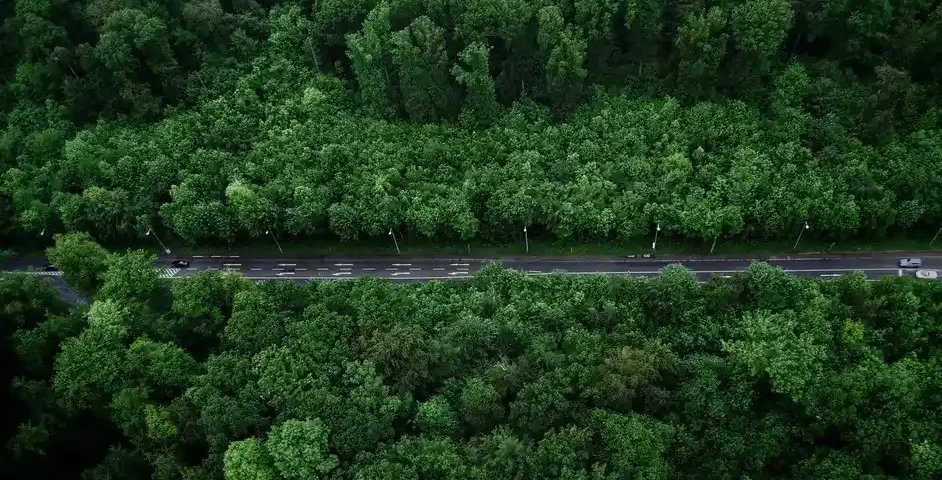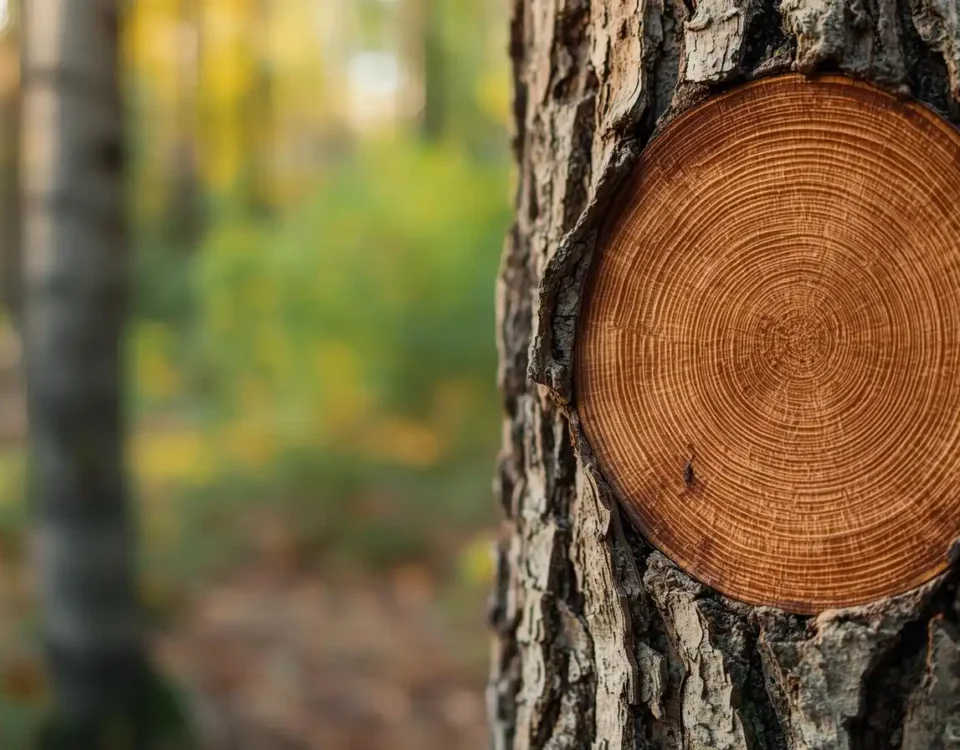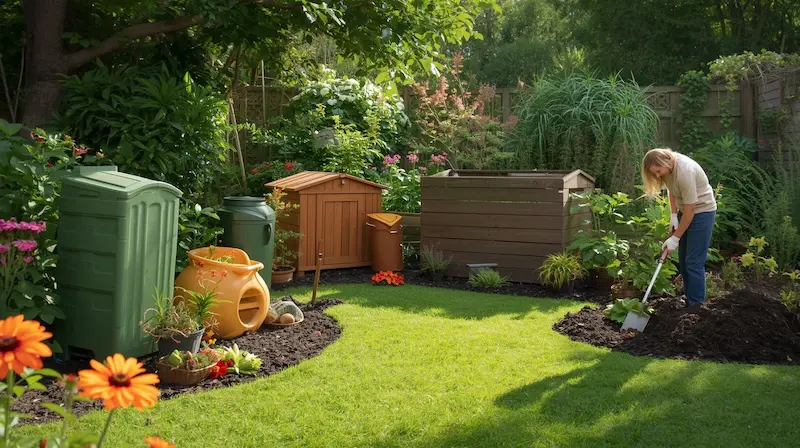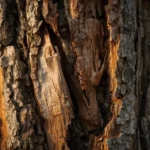
Tree Bark Peeling? A Homeowner’s Guide to Causes and Fixes
October 12, 2025
The Ultimate Guide to Kitchen & Dining Tables: Choose, Style & Care
October 15, 2025Have you ever paused to think about how many trees cover our planet? It’s a question that sparks curiosity and awe, yet for much of human history, the true answer remained a mystery. Estimates varied wildly; some believed there were only a few billion, while others guessed far more. The vastness of Earth’s forests and the limitations of early research made it nearly impossible to know for sure.
Today, science has finally given us clarity. Through satellite imagery, field surveys, and advanced modeling, researchers have uncovered a remarkable truth: our planet is home to roughly three trillion trees. It’s an almost unimaginable number, one that reshapes how we understand the natural world. But beyond the scale itself lies a deeper question: what does this figure really tell us? How do scientists count something so immense, and why does it matter so much for Earth’s future?
In this comprehensive guide, we’ll explore the science behind the global tree count, uncover where the world’s trees grow most abundantly, and examine their vital role in sustaining life. You’ll gain a clear, evidence-based understanding of how this discovery came to light, what it means for climate health, and why protecting these trees is essential to our planet’s survival.
The Global Tree Count: Unveiling the Trillion-Tree Truth
The Landmark Study: Where Does the “3 Trillion” Come From?
For decades, scientists struggled to answer one deceptively simple question: how many trees are there on Earth? Early estimates, based largely on limited satellite data and rough modeling, suggested about 400 billion trees globally. While this seemed reasonable at the time, those figures lacked the precision needed to truly capture Earth’s forest diversity. They overlooked vast, remote regions, especially boreal and tropical areas, and often relied on incomplete or outdated information.
That all changed in 2015, when a groundbreaking study by Thomas W. Crowther and colleagues, published in the journal Science, transformed our understanding of the world’s forests. You can access the original paper here: Crowther et al., Science, 2015.
This research was the first comprehensive attempt to combine on-the-ground measurements with satellite-based modeling at a truly global scale. The team analyzed data from over 400,000 forest plots across every major biome. These plots, measured by scientists worldwide, provided accurate counts of trees per hectare. By pairing this field data with high-resolution satellite imagery and environmental variables (such as climate, topography, and land use), the researchers developed a machine learning model capable of estimating tree densities across the planet.
The result was astonishing: approximately 3.04 trillion trees exist on Earth, far exceeding previous estimates. This new figure revolutionized environmental science and became the most widely accepted global tree count to date. It revealed that the world’s forests were far richer and more extensive than once thought, though still shrinking at an alarming rate due to deforestation and human activity.
Understanding the Number
What does three trillion trees actually mean? To put it into perspective, that’s roughly 422 trees for every person alive today. Imagine standing in a dense forest with thousands of trunks stretching in every direction, now multiply that by millions. If those trees were spread evenly across the planet’s land surface, they would form an unbroken green cover several kilometers deep.
Crowther’s study also broke down global tree distribution by region:
- About 1.39 trillion trees thrive in tropical and subtropical forests.
- 0.74 trillion grows in boreal forests.
- And 0.66 trillion stand in temperate zones.
These numbers highlight not only the abundance of life but also the diversity of the ecosystems that sustain it.
A Simplified Look at the Science
The methodology behind the study might sound complex, but the process can be understood in three clear steps:
- Ground Truthing: Researchers used data from hundreds of thousands of real-world plots where trees were counted manually.
- Satellite Correlation: They analyzed satellite imagery to identify environmental factors influencing tree density, like rainfall, elevation, and vegetation cover.
- Machine Learning Modeling: A predictive algorithm then filled in the gaps, estimating tree density in areas without field data based on environmental similarities.
This combination of field science and advanced computation produced a global tree map with unprecedented accuracy, setting a new benchmark for ecological research.
Demystifying the Count: How Scientists Measure Earth’s Forests
Methodology Explained: How Scientists Count Trillions of Trees
Trying to count every tree on Earth sounds impossible, and for good reason. The planet’s forests stretch across deserts, mountains, rainforests, and tundra, covering nearly one-third of all land. Many areas are so remote or dense that humans have never even set foot there. This immense scale makes traditional counting methods unworkable, but understanding growth aids like mulch for gardens is important. To solve this challenge, scientists rely on an integrated approach, a combination of satellites, artificial intelligence, field surveys, and advanced modeling techniques that together create a reliable global estimate.
The Challenge of Scale
Unlike counting stars or mapping cities,Trees exist in constantly changing, irregular patterns, sometimes requiring specific pruning techniques like stopping lion's tailing. They vary in size, shape, and density depending on location and environment, which can influence mastering tree shapes for homeowners. A single hectare of Amazon rainforest might hold more than 500 trees, while the same area in a dry savanna could have fewer than 20. Capturing all this variation requires technology that can see both the forest and the trees, literally, and understanding specific care for a ficus tree.
The Integrated Approach
Scientists combine several complementary methods to achieve accuracy. Each technique, satellite imagery, AI modeling, ground-truthing, and statistical extrapolation, contributes a piece to the puzzle. This collaboration between data from space and data from the soil ensures that global estimates aren’t just large-scale guesses but are rooted in verifiable evidence.
Satellite Imagery and Remote Sensing
Satellites orbiting Earth continuously capture detailed images of its surface. These high-resolution sensors detect different wavelengths of light reflected by vegetation, allowing scientists to distinguish between tree species, canopy cover, and even leaf moisture. Through spectral analysis, researchers can identify vegetation types and calculate tree density across vast regions, helping with browning arborvitae diagnosis.
Modern tools like Google Earth Engine have revolutionized this process. The platform allows researchers to analyze petabytes of geospatial data efficiently, visualizing forests at a planetary scale. By layering datasets, such as elevation, temperature, and vegetation indices, scientists can map where trees grow most densely and how those patterns shift over time.
Artificial Intelligence (AI) and Machine Learning
Once satellite images are collected, AI algorithms step in to make sense of the massive datasets. Using machine learning, these systems are trained to recognize patterns that indicate trees, forests, or deforested areas. The models learn to differentiate between forest types, such as tropical rainforests, mangroves, and boreal woodlands, by analyzing unique canopy shapes, textures, and spectral signatures.
AI’s predictive power is invaluable. It can process terabytes of imagery far faster than humans, filling in data gaps where satellite resolution is limited. Over time, as algorithms are fed more verified data, their accuracy improves, making tree mapping increasingly reliable at regional and global scales.
Ground-Truthing and Forest Inventories
Despite technological advances, boots-on-the-ground research remains essential. Scientists known as dendrologists and foresters conduct field surveys to collect precise data from selected plots, often examining specific aspects like tree bark care and its uses. They record details such as tree species, height, trunk diameter, and density, which can inform money tree care guides. This real-world data acts as a calibration tool, validating satellite imagery and AI predictions.
Governments and conservation organizations also maintain forest inventories, systematic collections of forest data gathered within national or sub-national boundaries, which can inform organic fertilizers for home gardens. These inventories provide long-term records that support forest management, carbon accounting, and biodiversity monitoring.
Advanced Modeling and Extrapolation
Finally, scientists use statistical models to extrapolate from the sampled plots to unsurveyed regions. By analyzing environmental variables, such as rainfall, soil type, altitude, and human land use, they can estimate tree density for areas where direct data is missing. This modeling transforms localized measurements into a complete global picture.
The process isn’t just about scaling up; it’s about refining accuracy. Models are continuously updated with new satellite imagery and field data, ensuring the estimates remain as precise and current as possible.
Expert Tip: Making Sense of the Science
Think of the global tree count like a high-resolution jigsaw puzzle. Ground surveys supply the most detailed pieces, satellite images provide the broad outlines, AI fills in missing sections, and statistical models ensure all the parts fit together. The combination of these techniques builds confidence in the results and helps scientists track how the world’s forests are changing over time, impacting local practices like hugelkultur garden beds.
Methodology Comparison Table
|
Methodology |
Description |
Pros |
Cons |
Scale |
|
Satellite Imagery |
Uses orbiting satellites to capture images of Earth’s surface, analyzing spectral signatures to identify vegetation. |
Covers vast areas quickly; provides consistent, repeatable data. |
Limited resolution for small trees; affected by cloud cover; requires ground validation. |
Global |
|
AI/Machine Learning |
Algorithms process satellite and field data to identify tree density, canopy patterns, and species types. |
Handles massive datasets efficiently; improves accuracy over time; enables predictive analysis. |
Needs large, high-quality training data; may misclassify complex terrains; limited transparency in decision-making. |
Regional to Global |
|
Ground-Truthing |
Field scientists measure tree species, height, diameter, and density directly within sampled plots. |
Extremely accurate for sampled areas; provides rich ecological detail. |
Labor-intensive; costly; limited in coverage; time-consuming. |
Local to Regional (used for calibration) |
|
Forest Inventories |
Systematic national or regional surveys collecting long-term data on forest composition, growth, and use. |
Valuable for policy and conservation; supports sustainable forest management. |
Methodology varies by country; expensive; incomplete global coverage. |
National to Sub-national |
A World of Green: Global Tree Distribution and Density
Where Are All These Trees? Regional Distribution
Although Earth is home to roughly three trillion trees, they are far from evenly spread across the globe. Some regions, like the Amazon Basin or the boreal forests of Russia and Canada, are densely packed with trees stretching for thousands of kilometers. Others, such as deserts, drylands, and grasslands, have only sparse, scattered growth. Understanding how trees are distributed helps scientists assess global biodiversity, carbon storage, and conservation priorities.
Forests are shaped by climate, geography, and human activity, sometimes leading to issues like sudden branch drop syndrome. Warm, humid regions tend to support dense canopies, while colder or drier zones sustain hardier, more widely spaced species.The planet’s trees are largely concentrated in three major biomes: tropical, boreal, and temperate forests, each playing a distinct role in Earth’s ecological balance, including fast-growing trees for cooling.
Key Biomes and Their Significance
Boreal Forests (Taiga)
Stretching across northern Europe, Asia, and North America, the boreal forest is the largest terrestrial biome on Earth. It accounts for roughly a quarter of the world’s trees, dominated by conifers like spruce, pine, and fir. These forests thrive in cold, subarctic climates where winters are long and summers short. Despite their harsh conditions, boreal forests are vital carbon sinks, storing massive amounts of carbon in both trees and permafrost soils.
Tropical Rainforests
Near the equator, in regions such as the Amazon, Congo Basin, and Southeast Asia, lie the planet’s tropical rainforests, home to more than 40% of all trees on Earth. These forests are biodiversity powerhouses, teeming with millions of plant and animal species. Their warm, moist climate allows rapid growth and regeneration. However, they are also the most threatened, facing relentless deforestation for agriculture, logging, and infrastructure.
Temperate Forests
Found across Eastern North America, Europe, and East Asia, temperate forests experience four distinct seasons. They host a mix of deciduous trees, such as oak and maple, alongside evergreens like pine and fir. While they occupy smaller areas than tropical or boreal forests, temperate forests are vital for ecosystem stability, soil preservation, and carbon regulation.
Savannas and Grasslands
In Africa, Australia, and parts of South America, savannas and grasslands dominate the landscape. These regions feature scattered trees, often acacia or baobab, interspersed with tall grasses. Though tree density is low, these ecosystems support diverse wildlife and play a key role in preventing desertification.
Understanding the Data: Definitions and Limitations
It’s important to note that tree counts vary depending on how researchers define a “tree” or “forest.” Some studies only include woody plants above a certain height or trunk diameter, while others count smaller shrubs and saplings. Similarly, what one country classifies as “forest” may differ from another’s standards. These variations can lead to slight discrepancies in regional estimates, but the overall distribution trends remain consistent across scientific literature.
Tree Distribution by Biome/Region
|
Biome/Region |
Estimated Trees (Billions) |
% of Global Total |
Key Characteristics |
|
Boreal Forests |
750 |
25% |
Conifer-dominated, cold climates stretch across Canada, Russia, and Scandinavia. |
|
Tropical Forests |
1,200 |
40% |
Dense canopies, high biodiversity, and rapid growth; found in the Amazon, Congo, and Southeast Asia. |
|
Temperate Forests |
450 |
15% |
Mix of deciduous and evergreen species; moderate climates with distinct seasons. |
|
Drylands/Savannas |
300 |
10% |
Scattered trees in arid or semi-arid regions; frequent fires and grazing pressure. |
|
Other (Montane, Mediterranean, Urban, Plantations) |
300 |
10% |
Includes mountain forests, coastal zones, managed plantations, and urban green spaces. |
Source: Crowther et al., Science (2015), complemented by FAO Global Forest Resources Assessment data.
Factors Influencing Tree Growth and Density
Climate – Temperature, rainfall, and sunlight determine where trees can thrive. Warm, moist climates encourage dense forests, while extreme cold or drought limits growth.
Geography and Topography – Altitude, soil composition, and access to water all influence forest composition. Mountain ranges, for example, host distinct species at different elevations.
Human Activity – Agriculture, urbanization, and deforestation dramatically alter natural tree cover. On the other hand, reforestation and conservation programs can help restore balance over time.
Meet a Tree: Spotlight on Unique Species and Ecosystems
The Ancient Bristlecone Pine
Among the most resilient living organisms on Earth, the Bristlecone Pine (found in California, Nevada, and Utah) can live for nearly 5,000 years. Growing in rocky, high-altitude terrain where few other species survive, these trees are natural timekeepers, each ring capturing centuries of climate history.
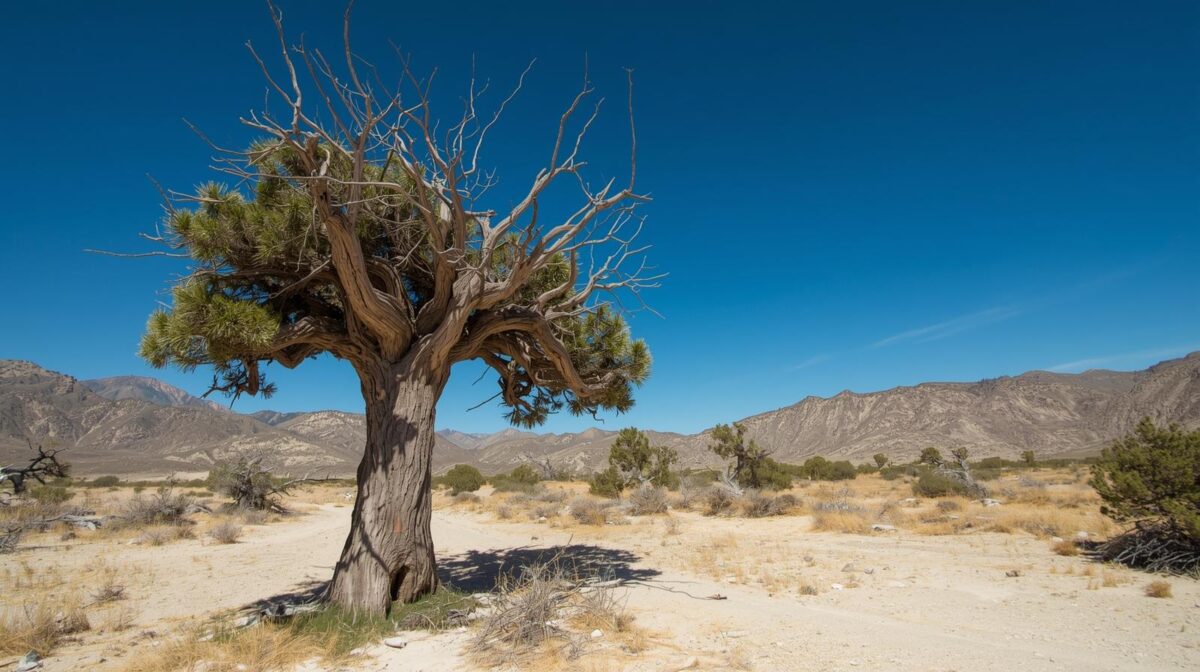
The Amazon Rainforest’s Brazil Nut Trees
The towering Brazil Nut Tree is both an ecological and economic cornerstone in the Amazon. It's nuts sustain local communities, while its presence supports countless animal species, including agoutis, which play a vital role in seed dispersal. These trees rely on specific pollinators and undisturbed forest conditions, making them a symbol of the interconnectedness of rainforest life.
Mangrove Forests: Coastal Protectors
Mangroves thrive where few other trees can, along tropical coastlines, rooted in salty, oxygen-poor waters. Their tangled roots protect shorelines from erosion, buffer storm surges, and store carbon at up to four times the rate of terrestrial forests. Found across South Asia, the Caribbean, and West Africa, mangroves are vital natural shields against rising sea levels.

Echoes of the Past: Earth’s Ancient Forests and Human Impact
Historical Perspective: How Many Trees Did Earth Use to Have?
When we look at today’s estimate of roughly three trillion trees, it’s hard to imagine that Earth once held far more. Based on paleobotanical evidence, carbon dating, and ecological modeling, scientists believe that before human civilization took root, our planet may have supported around six trillion trees, roughly double the current number. These estimates carry some uncertainty, since they rely on indirect data such as fossilized pollen, ancient soil samples, and sediment records. But the trend is clear: human activity has dramatically reshaped the world’s forests over time.
The Pre-Human Landscape
Before humans began altering the environment, forests covered nearly half of the Earth’s land area. Massive stretches of uninterrupted woodland blanketed continents from pole to equator. Ancient forests were thicker, denser, and more biodiverse, sustaining ecosystems that had evolved over millions of years.
The Dawn of Agriculture
Roughly 10,000 years ago, as humans transitioned from hunting and gathering to farming, forest loss began in earnest. Early agricultural societies cleared land for crops and livestock, particularly in fertile regions like the Fertile Crescent, the Indus Valley, and along the Yangtze River. While this deforestation happened slowly compared to today’s rates, it marked the beginning of large-scale land conversion.
The Industrial Revolution and Beyond
The Industrial Revolution in the 18th and 19th centuries dramatically accelerated deforestation. Wood became a key fuel source for steam engines, iron smelting, and construction. As urban populations grew, forests gave way to cities, railways, and farmlands. By the 20th century, mechanized agriculture and global trade drove deforestation to unprecedented levels. Satellite monitoring now shows that human activity has reduced Earth’s tree count by nearly half compared to pre-agricultural times, a staggering loss in less than 12,000 years.
Expert Insight:
To put this change in perspective, if Earth once had six trillion trees and now holds three trillion, humanity has effectively removed one tree for every one currently standing. This loss has not only altered landscapes but also reshaped the planet’s climate, water systems, and biodiversity.
The Human Footprint: Deforestation, Reforestation, and Our Future
The Scale of Tree Loss: Deforestation Rates
Deforestation continues to be one of the most pressing environmental challenges of our time. According to the FAO’s Global Forest Resources Assessment (2020), the world loses about 10 million hectares of forest every year, an area roughly the size of Portugal.
Primary Drivers of Deforestation:
- Agriculture: Large-scale farming for cattle, soy, and palm oil is the leading cause of forest loss, especially in tropical regions.
- Logging: Both commercial timber production and illegal logging remove vast tracts of forest, often unsustainably.
- Urbanization: Expanding cities, roads, and infrastructure consume more forested land each year.
- Mining and Resource Extraction: Open-pit mines and energy development projects often destroy forests and pollute nearby ecosystems.
Global Hotspots:
Deforestation is most severe in the Amazon Basin, the Congo Basin, and Southeast Asia, where tropical forests are cleared at alarming rates. These areas, which contain the highest biodiversity on Earth, are losing millions of trees annually to agricultural expansion and logging.
Impacts Beyond the Numbers:
Tree loss goes far beyond aesthetics; it affects the planet’s core systems. Deforestation leads to:
- Biodiversity loss, driving species extinction.
- Soil erosion reduces agricultural productivity.
- Disruption of water cycles, leading to droughts and floods.
- Increased greenhouse gas emissions, as trees that once absorbed CO₂ are burned or decay.
For those interested in monitoring current deforestation rates, Global Forest Watch provides near real-time data and interactive maps showing where tree cover is disappearing.
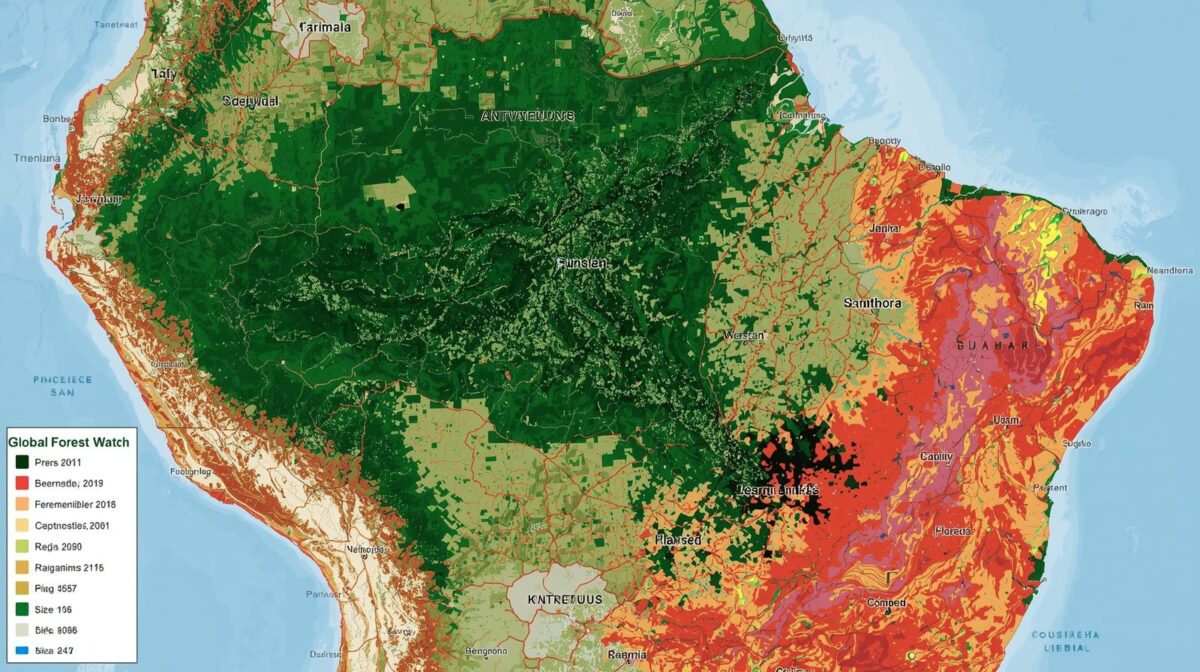
The Hope of Regeneration: Reforestation and Conservation Efforts
Despite the grim statistics, there’s reason for hope. Around the world, individuals, organizations, and governments are working to reverse the damage through reforestation and conservation initiatives.
Major Global Initiatives:
- The Bonn Challenge: A global effort launched in 2011 to restore 350 million hectares of deforested and degraded land by 2030.
- The Trillion Trees Initiative: A joint commitment by the World Economic Forum, WWF, and BirdLife International aiming to protect and restore one trillion trees globally.
- UNEP and FAO Reforestation Programs: The United Nations Environment Programme (UNEP) and the FAO Forestry Division regularly track reforestation progress, highlighting both successes and areas in need of improvement.
Types of Reforestation:
- Afforestation: Planting trees in areas that were not previously forested, often to create new carbon sinks or green belts.
- Reforestation: Replanting trees in recently deforested areas to restore ecosystems and reduce erosion.
- Natural Regeneration: Allowing forests to regrow on their own through protection from human interference, often resulting in more resilient ecosystems.
Challenges and Successes:
Reforestation isn’t as simple as planting trees. Success depends on factors such as soil quality, local climate, and the choice of species. Planting fast-growing, non-native trees may provide short-term benefits but can harm biodiversity in the long run. Sustainable reforestation focuses on native species, community involvement, and long-term monitoring.
Notable Success Stories:
- China’s “Green Great Wall” project has restored millions of hectares of forest in an effort to combat desertification.
- Ethiopia set a world record in 2019 by planting more than 350 million trees in a single day.
- Costa Rica has reversed decades of deforestation through strong conservation laws and eco-tourism incentives.
Expert Tip:
Balancing deforestation and reforestation is key to the planet’s future. While we cannot instantly replace every tree lost, strategic conservation and restoration can rebuild ecosystems, store carbon, and stabilize global climates over time. The challenge now is not just to plant trees, but to protect and sustain them for generations to come.
Guardians of the Planet: Why Trees Are Indispensable
When we talk about saving the planet, we often think of renewable energy or reducing plastic waste. Yet, one of the most powerful tools we already have is rooted in the ground, trees. These living giants form the foundation of our planet’s health, supporting life, stabilizing ecosystems, and regulating the very systems that make Earth habitable.
The Ecological Importance of Trees
Climate Regulation
Carbon Sequestration
Trees are nature’s carbon storage units. Through photosynthesis, they absorb carbon dioxide (CO₂), one of the main greenhouse gases, and store it as biomass in their trunks, branches, roots, and leaves. According to the Food and Agriculture Organization (FAO), forests absorb roughly 2.6 billion tonnes of CO₂ annually, offsetting about one-third of fossil fuel emissions. Without them, the pace of climate change would accelerate dramatically.
Oxygen Production
It’s a familiar classroom lesson, but worth repeating: trees make the air we breathe. A single mature tree can produce enough oxygen to support two human beings for a year. Through photosynthesis, trees convert CO₂ and water into glucose and oxygen, sustaining not just humans, but all aerobic life on Earth.
Local Climate Regulation
Beyond global climate control, trees shape their immediate environment. They provide shade, lower surface temperatures, and reduce the “urban heat island” effect in cities. Through evapotranspiration, the release of water vapor through leaves, they help cool the air naturally. Neighborhoods with abundant tree cover can be up to 5°C cooler than areas without them.
Biodiversity Hotspots
Forests are the cradle of life. Nearly 80% of terrestrial biodiversity lives within forest ecosystems. From the Amazon’s howler monkeys to fungi thriving beneath pine roots, each species plays a role in maintaining ecological balance. Trees form complex layers, canopy, understory, and forest floor, that host everything from birds and insects to mammals and microorganisms. When forests are lost, these networks collapse, leading to irreversible biodiversity loss.
Dr. Suzanne Simard, a renowned forest ecologist, once explained that “trees are social creatures.” Through underground fungal networks, trees communicate, share nutrients, and support weaker neighbors. This interconnectedness shows that forests are not just collections of individual trees, but living, cooperative systems.
Water Cycle Regulation
Trees are key players in the Earth’s water cycle. They absorb groundwater through their roots and release it into the atmosphere through transpiration, contributing to rainfall patterns. Forests, especially tropical ones, act as natural water pumps, recycling moisture and sustaining regional rainfall.
They also act as natural filters. Tree roots stabilize soil and reduce sediment runoff, ensuring cleaner rivers and groundwater. In places like the Congo Basin and the Amazon, deforestation has already disrupted rainfall cycles, showing how fragile this balance can be.
Soil Health and Erosion Control
Healthy soil and healthy forests go hand in hand. Tree roots bind soil, preventing erosion from wind and rain. The leaf litter that falls to the forest floor decomposes into organic matter, enriching the soil with nutrients essential for plant and microbial life.
In agricultural regions, windbreaks and shelterbelts made of trees help protect crops from erosion and desiccation. Without this natural armor, fertile topsoil built up over centuries can be lost in a single storm.
Expert Tip:
Understanding trees as climate regulators, biodiversity anchors, water filters, and soil stabilizers reframes them as more than scenery. They are Earth’s life-support system, intricately connected to every ecosystem process that sustains both nature and people.
The Economic and Societal Value
Livelihoods and Resources
For billions of people, forests are more than just green spaces; they’re lifelines. Around 1.6 billion people depend directly on forests for food, shelter, fuel, and income. The timber industry supports millions of jobs worldwide, while non-timber products like fruits, nuts, resins, and medicinal plants contribute to both local economies and global trade.
Sustainable forestry and eco-certification programs are helping communities manage forests responsibly, ensuring that future generations can benefit without depleting the resource.
Ecotourism is another growing sector that underscores the economic value of trees. National parks, nature reserves, and forest treks attract millions of visitors annually, generating revenue while promoting conservation. Countries like Costa Rica have built entire sustainable tourism models around forest preservation.
Cultural and Spiritual Significance
Trees hold deep cultural and spiritual importance across civilizations. From the sacred fig tree (Bodhi tree) under which Buddha attained enlightenment to the oak revered by ancient Celts, trees have symbolized life, wisdom, and endurance for millennia.
For indigenous communities, forests are intertwined with identity, tradition, and survival. They serve as pharmacies, grocery stores, and temples. Many of these cultures view trees not as resources to be used, but as relatives to be respected, a perspective increasingly echoed in modern environmental ethics.
On a more personal level, research shows that spending time in forests, often called forest bathing or shinrin-yoku, reduces stress, lowers blood pressure, and improves mental health. In urban settings, even small green spaces have measurable benefits for well-being and community cohesion.
The Hidden Economy of Ecosystem Services
Economists often talk about “ecosystem services”, the benefits humans gain from natural ecosystems. When forests are valued in this way, their contribution is staggering. The World Bank estimates that forests provide over $75 trillion in ecosystem services annually, from carbon storage and water regulation to soil fertility and pollination. Yet, because these services are often “invisible” in economic systems, their true worth is underestimated.
Dr. Robert Costanza, an environmental economist, argues that “ignoring the value of ecosystem services is like running a company without accounting for depreciation, you may look profitable in the short term, but you're actually eroding your assets.”
E-E-A-T Consideration: Expert Voices
To ensure scientific accuracy and authority, this understanding of trees’ ecological and economic value draws on leading organizations and researchers, including:
- Intergovernmental Panel on Climate Change (IPCC): Assessing the role of forests in global carbon cycles.
- Food and Agriculture Organization (FAO): Providing global forest resource assessments and carbon data.
- Dr. Suzanne Simard (University of British Columbia): Research on tree communication and forest networks.
- Dr. Robert Costanza (Australian National University): Pioneer in ecosystem service valuation.
- World Bank & UNEP Reports: Quantifying forests’ economic and social importance.
Looking Ahead: Challenges, Conservation, and the Future of Forests
As we move deeper into the 21st century, our planet’s forests stand at a crossroads. They’ve survived ice ages, mass extinctions, and centuries of human use, but the challenges ahead are unlike anything they’ve faced before. Understanding these threats and the opportunities to act is key to ensuring the world’s trees remain a living legacy for generations to come.
Threats to Global Tree Populations
Climate Change: A Growing Stress Test
Climate change is reshaping the natural rhythm of forests. Rising temperatures, prolonged droughts, and erratic rainfall are altering growth cycles and increasing the risk of wildfires. According to the Intergovernmental Panel on Climate Change (IPCC), the frequency of large-scale fires in regions like North America and Australia has doubled in the past two decades.
Beyond fire, many trees are struggling to adapt to shifting climate zones. Species that once thrived in cool, moist environments are being pushed uphill or poleward. In some places, they simply run out of space to go.
Pests and Diseases: The Silent Invaders
Globalization and warmer climates have created ideal conditions for pests and pathogens to spread across continents. Bark beetles, once controlled by cold winters, now survive longer and infest vast swaths of boreal forests. In the tropics, fungal diseases like Ceratocystis are decimating key species such as acacias and oaks.
These biological threats often go unnoticed until it’s too late, leading to cascading ecological effects, reduced biodiversity, loss of carbon storage, and weakened forest resilience.
Human Expansion: The Relentless Pressure
Despite increasing awareness, forests continue to be cleared for farmland, infrastructure, and mineral extraction. The World Resources Institute reports that the world loses around 10 million hectares of forest each year, roughly the size of Portugal.
While deforestation rates have slowed in some regions due to better governance, in others, particularly the Amazon and Southeast Asia, the pressure remains intense. Each cleared hectare means fewer trees, less carbon storage, and fewer habitats for the millions of species that depend on forests to survive.
Future Projections and “What If” Scenarios
Modeling Future Trends
Scientists use a combination of satellite imagery, AI-driven analytics, and long-term ecological monitoring to project how global forests might change in the coming decades. Predictive models show that if current deforestation rates continue, the planet could lose up to 10% of its remaining tree cover by 2050.
However, under sustainable management and aggressive reforestation efforts, that trend could reverse, potentially adding hundreds of billions of new trees over the next century.
Impact of Policy and Technology
Policy and innovation are the twin levers shaping the forests of the future. Advanced monitoring systems, like Esri ArcGIS StoryMaps, allow scientists and policymakers to visualize forest changes in real time, providing transparency and urgency. Meanwhile, satellite-based tracking tools such as Global Forest Watch offer near-instant alerts on illegal logging or wildfire activity.
Government action also matters. Carbon offset markets, reforestation incentives, and stricter land-use regulations have the power to alter the trajectory of global forest health. Nations participating in initiatives like the Bonn Challenge or the Trillion Trees Initiative demonstrate how coordinated policy can drive large-scale restoration.
The “What If” Scenarios
- If conservation continues at the current rate, Global forests will stabilize but remain below pre-industrial levels.
- If aggressive reforestation and protection programs are scaled up, the world could gain up to 1 trillion new trees, capturing an estimated 200 billion tonnes of CO₂ over several decades.
- If deforestation accelerates unchecked, Forest loss could push ecosystems past tipping points, leading to widespread desertification and biodiversity collapse.
These projections underscore that the future of forests depends on the choices we make now, not just at the government level, but as individuals.
Empowering Action: What Can Be Done?
Global Collaboration
Protecting forests requires cooperation that transcends borders. International frameworks like the UN Decade on Ecosystem Restoration (2021–2030) and REDD+ (Reducing Emissions from Deforestation and Forest Degradation) encourage nations to restore degraded land and reward conservation performance. Funding from global institutions and private investors is increasingly being directed toward sustainable forestry and community-led initiatives.
But beyond policy, success depends on collective will. Conservation efforts must involve local communities, the people who live alongside forests and depend on them most directly.
Sustainable Practices
Businesses and consumers can drive meaningful change through their choices. Supporting FSC-certified timber products ensures that wood comes from responsibly managed forests. Choosing sustainable palm oil, soy, and beef helps curb deforestation in tropical regions.
Agricultural innovations like agroforestry, integrating trees with crops and livestock, provide food security while restoring ecosystems. Likewise, urban planning that prioritizes green corridors and city forests helps maintain biodiversity even in concrete environments.
Individual Impact: Your Role in the Trillion
It’s easy to feel small when thinking about three trillion trees, but every action adds up. A single tree planted in your yard, a donation to a reforestation charity, or even a mindful purchase can contribute to global restoration.
Simple actions that matter:
- Support verified tree-planting organizations such as Eden Reforestation Projects, One Tree Planted, or Team Trees.
- Reduce paper waste and choose recycled products.
- Advocate for forest-friendly policies in your community.
- Learn about your local ecosystems and volunteer for native tree planting drives.
Expert Tip:
Empowerment begins with awareness. Trees connect local action to global impact. Whether you’re conserving a patch of forest, funding restoration, or simply planting one tree, you’re part of the solution, one leaf in the trillion-tree vision for a healthier planet.
Your Questions Answered: Global Tree Count FAQs
Conclusion: Nurturing Our Shared Green Legacy
Our planet is home to an awe-inspiring three trillion trees, a figure that reflects not just the scope of Earth’s forests, but also the power of modern science to reveal what was once hidden from view. Through advanced satellite imaging, data modeling, and years of field research, scientists have mapped and measured our global canopy with remarkable precision.
Yet this number is more than a scientific milestone. It’s a mirror reflecting the health of our world. Trees regulate our climate, anchor ecosystems, and sustain countless forms of life, including our own. Each trunk and leaf plays a small but vital role in keeping the planet balanced and breathable.
Understanding this isn’t just about facts and figures. It’s about recognizing our place within the system and the responsibility that comes with it. The forests that shelter wildlife, filter our air, and store carbon are under constant threat from deforestation, climate change, and neglect. Protecting them requires global collaboration, strong policy, and everyday choices that favor sustainability.
Every action counts. Whether it’s supporting reforestation programs, choosing responsibly sourced products, or simply planting a tree in your community, small steps add up to meaningful change.
Our planet’s green lungs are a shared legacy, one that depends on awareness, stewardship, and collective will. The story of Earth’s trees is ultimately a story about us: our curiosity, our choices, and our commitment to safeguarding life for generations to come.


